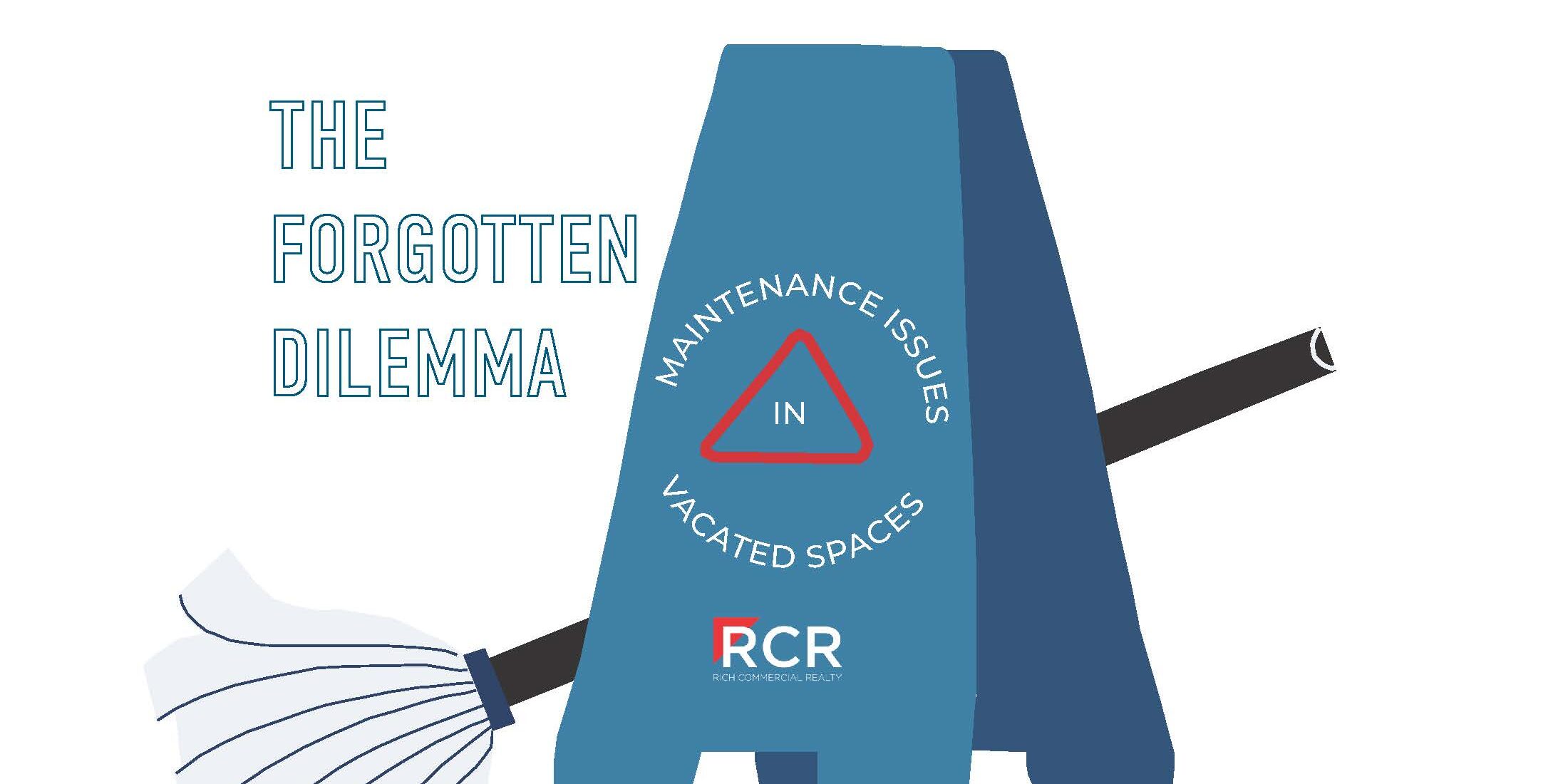The shuffle of space turning over, whether it’s an office, industrial, or even a retail space, is a necessary part of the commercial real estate industry. However, in the wake of departure lies a hidden challenge often overlooked that can sneak up quickly: maintenance issues. These problems can lurk unnoticed, compounding over time, causing costly headaches that can impact a sale or turnover of a leased space. As an owner, you certainly don’t want to cause an expensive headache, but tenants, don’t forget that you are still on the hook until the very end of your lease, whether you are occupying the space or not! Let’s delve into the nuances of maintenance issues that arise once a space is vacated.
Neglected Repairs:
One of the most prevalent problems in vacated spaces is neglected repairs. From leaky faucets to faulty electrical wirings, minor issues left unattended can snowball. When occupants leave, they might not prioritize fixing these problems, assuming they aren’t or won’t be responsible anymore….somebody else’s problem! Unfortunately, these overlooked repairs can lead to water damage, mold growth, unsecured properties, or even fires if left unaddressed.
Pest Infestations:
Be sure to continue or even increase pest services for vacated spaces! Empty spaces provide an open invitation for pests to move in. Rodents, insects, and other unwelcome guests can quickly take advantage of the absence of regular human activity. Once they settle in, they can cause extensive damage to the structure and pose health risks to future occupants. Eradicating these pests and repairing the damage they cause can be time consuming and expensive.
Structural and System Deterioration:
Without regular maintenance and upkeep, the structural integrity of a vacant space can deteriorate rapidly. Weather, moisture, and natural wear and tear can take their toll, leading to issues like roof leaks, saggy ceiling tiles, foundation cracks, or crumbling walls. Identifying and addressing these problems early can prevent costly repairs or code infractions down the line and ensure the longevity of the property. These problems could include things like clogged gutters or critical drains, vegetation, and root overgrowth, and dry p-traps that allow nasty odors in. Also, don’t forget to keep systems like fire alarms, suppression systems, fire extinguishers, and elevator systems in compliance.
Vandalism and Theft:
Vacant spaces are prime targets for vandalism and theft. Often it’s not just professional thieves or the homeless community but mischievous neighborhood kids! Broken windows, graffiti, tread marks in the parking lot from burnouts or doughnuts, and stolen fixtures are all common problems faced by property owners of empty buildings. Not only do these acts of vandalism detract from the aesthetics of a space, but they also pose safety risks. Investing in security measures like alarm systems, security cameras, and frequent property inspections can help deter criminal activity and protect the integrity of the property.
HVAC System Malfunctions:
The Heating, Ventilation, and Air Conditioning (HVAC) system is often neglected in vacated spaces. However, without being run regularly and without proper maintenance, these systems can develop issues such as clogged filters, malfunctioning thermostats, or refrigerant leaks. A malfunctioning HVAC system not only leads to increased energy costs but potential health hazards if air quality is affected. Regular inspections and maintenance of HVAC systems are essential to ensure they remain in optimal condition and keep moisture out of the space or keep plumbing from freezing in cold temperatures.
Environmental Concerns:
Vacant spaces can also become breeding grounds for environmental hazards. Wasteful water and plumbing leaks, sewage backups, water runoff onto neighboring properties, and mold (especially if you neglect the HVAC) are just a few examples of potential environmental impacts lurking within neglected buildings. Exposure to some of these hazards can pose serious health risks to anyone who enters the space. Vacant buildings and land are attractive locations to illegally dispose of hazardous waste, drums, and containers, a practice commonly referred to as “midnight dumping.” Conducting thorough inspections, having proper security, and remediation efforts can help mitigate these risks and ensure a safe environment.
At https://richcommercialrealty.com/ we have seen it all, but the good news is that all of these headaches are preventable! With proactive maintenance strategies and diligent oversight, these issues can be mitigated, allowing for a smoother transition for future occupants or buyers, less surprise costs, and preserving the integrity of the space or property for years to come.









